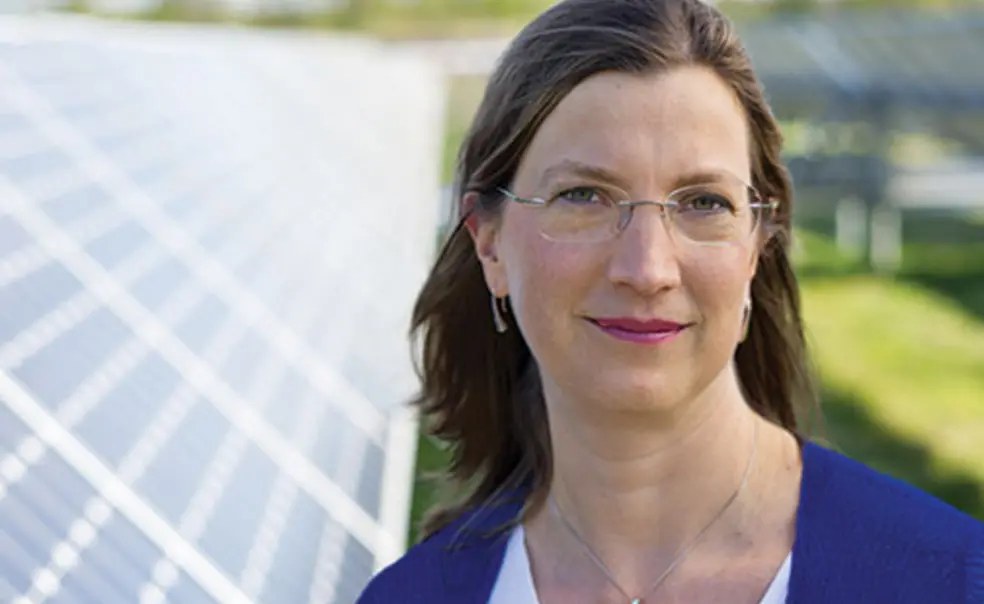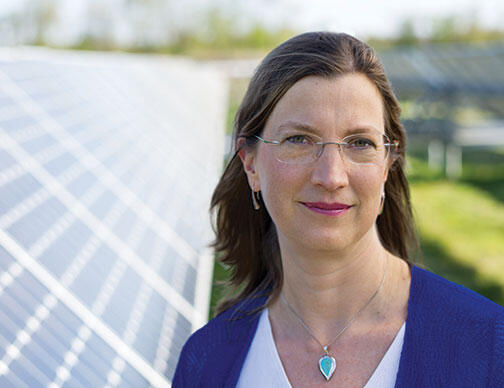Q&A: Denise Mauzerall, Clearing the Air
The health impacts of air pollution and climate change — and what to do about them
Denise Mauzerall bridges science and policy to study the effects of air pollution on health, agriculture, and climate change. A professor of environmental engineering with an appointment at the Woodrow Wilson School, Mauzerall identifies ways to improve air quality while reducing climate warming. PAW spoke with Mauzerall about opportunities to address air pollution and climate change.
The latest report from the Intergovernmental Panel on Climate Change (IPCC) says climate change already is having huge effects on every continent.
Global emissions of greenhouse gases like carbon dioxide are large and growing quickly, and the impacts are enormous. To avoid tremendous changes in our climate, global emissions need to decrease by more than 80 percent by 2050. The National Climate Assessment, which like the IPCC was written by scientists, cited climate change as a reason for recent increases in U.S. heat waves, torrential rains, and drought.
Although some progress is being made, current efforts to reduce emissions are totally inadequate, given the scale of catastrophic impacts projected to occur if we continue on the current business-as-usual path. I think most people don’t understand what this means, and vested interests are trying hard to keep people in denial.
What needs to happen now?
Globally, we have to make changes in our energy use and do it quickly. We must switch from relying on fossil fuels that release carbon dioxide and other pollutants to energy sources that do not. We also have to increase our energy efficiency. If we don’t change, there will be profound transformations to our planet, such as a rise in sea levels and species extinctions. If the United States would take a leadership position in addressing climate change, it would help enormously.
What are the air pollutants we should be most concerned about?
The air pollutants that harm human and plant health directly are called “conventional” air pollutants and include ozone and fine particles. Ozone pollution reduces agricultural yields the most, and fine particles are most damaging to health. We know from large epidemiological studies that higher concentrations of surface ozone and fine-particle pollution increase respiratory and heart disease and premature mortalities.
Greenhouse gases don’t directly damage health, but they are the largest contributors to climate change, which indirectly affects health through events like storms and floods. If we stop emitting conventional pollutants, the air cleans itself quickly because these pollutants are relatively short-lived. But greenhouse gases stick around anywhere from decades to centuries and therefore their concentrations will stay high for a long time even after we stop emitting them.
How does local air pollution affect the rest of the world?
People closest to a pollution source are most affected, but because winds carry air pollutants, people far downwind can be affected, too. Pollutants from China impact the Chinese people the most, but also increase premature mortality in downwind countries like Korea, Japan, and even the United States.
How can we reduce air pollution and cut greenhouse gas emissions?
I am a big proponent of renewable wind and solar power, which have been increasing extraordinarily rapidly recently because their costs are plummeting. Improving technologies that facilitate transport and storage of electricity will help increase the use of renewables. Nuclear energy likely also has a place. There is debate about the types of solutions that should be implemented, but there is general agreement that U.S. congressional politics is handicapping progress.
Is there any good news?
With political will and more technological innovation, making changes is feasible, and the cost is far less than if we continue on our current path and deal with the consequences later. Princeton is becoming a significant player with new research and deployment of solar power on campus.
What can each of us do?
People think that they can’t effect change. But small things add up, such as fuel-efficient cars, energy-efficient homes, and the use of renewable energy. Individuals taking leadership roles in their organizations can expand their impact. Unfortunately, individual actions will not be enough. Voting for government representatives who recognize the urgency of addressing climate change is critical, and ultimately putting a price on carbon emissions likely will be most effective at catalyzing change.
Interview conducted and condensed by Anna Azvolinsky *09













No responses yet